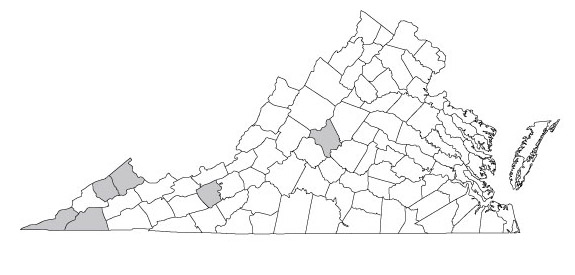Virginia Land Snails
.jpg)
Neohelix major by Bill Frank ©
Click photo(s) to enlarge.
Neohelix major (A. Binney, 1837)
Family: Polygyridae
Common name: Southeastern Whitelip
Identification
Width: 28-42 mm
Height: 30-32 mm
Whorls: 5.5+
The big, sturdy, globe-like shell of Neohelix major has a closed umbilicus and a simple reflected lip. Its shell sculpture has stronger radial ridges that give it a coarser texture and less glossy appearance than N. albolabris. It tends to be a bit larger as well, although there is an overlap in sizes (Emberton, 1988). Though no parietal tooth is present, some may have a low, bump-like denticle on the columellar margin of the aperture.
Ecology
Neohelix major hides in leaf litter or among rocks or logs in forested areas. It is usually found in damp, rich habitats, often on lower forest slopes with coarse woody debris. In some cases it may be found in grassy areas such as roadsides. Although it frequents the same habitats as N. albolabris, the two species are not found together (Hubricht, 1985).
Taxonomy
Synonyms for N. major include: Helix major, Mesodon major, Polygyra albolabris major, Triodopsis major, and T. albolabris major.
Distribution
Neohelix major’s range extends from the Middle Atlantic states to Alabama and Georgia in the south. It is generally found in Virginia’s western counties. Historic records may be confused with N. albolabris and the more coastal species N. solemi.
NatureServe Global Rank: G4G4
NatureServe State Rank: S3S4
Meegan Winslow, Ken Hotopp 1/2013
Range Map



